The Mountain of God
By M. Eichhorst
“El Shaddai descended upon Mount Sinai to the top of the
mountain. El Shaddai summoned Moshe to the top of the mountain
and Moshe ascended”.
Exodus 19:20
The Negev Desert (Wilderness) range where Har KarKom (Mount KarKom) is Located.
The possible site of Mount Sinai described in the Torah of the Tanach Bible.
Where is Mount Sinai? For thousands of years biblical scholars and archaeologists have said it
is “this mountain” or it is “that mountain”, and they have even gone as far as dubbing Mt. Horeb
by the Roman Catholic Church also known as Mt. Jebel Musa in the Sinai Peninsula as Mount
Sinai but none of the discoveries at Mt. Jebel Musa seem to prove that this mountain is the real
Mt. Sinai until a new discovery that has surfaced in Israel.
There are 3 references or possible locations of the Mountain of God
(1) The Mountain of Jebel Musa or Mount Sinai is in the Sinai Peninsula which has a Roman
Empire Catholic Church at its base but no evidence that the Israelites were ever there, or the
evidence hidden by the Church.
The Mountain of Jebel Musa & Saint Catherine’s Monastery
Sinai Peninsula, Egypt near the Red Sea
(2) The Mountain of Jabal al-Lawz or the Mountain of Moshe (Moses) is in Arabia or Saudi
Arabia which has evidence that the Israelites were there with an etched Menorah, 12 pillar
concrete stones for standing or sitting, a stone split into two believed to be the stone Moshe
struck, dried-up-river, and an etched Bull. This site is protected by the Saudi Arabian
Government and fenced off, no trespassing. It also has evidence at the Gulf of Aqaba of the
Red Sea that the possibility that the Egyptian Chariots artifacts are in the Gulf of the Sea. The
Saudi Arabian Government is blocking non-citizens from seeing. They can only see pictures
under the sea and therefore cannot verify it.
Mount Jabal al-Lawz, Moses Split Rock, Bull Etched on Rock, & Sacrificial Calf Alter
North/West Saudi Arabia near the Red Sea
(3) The Mountain of KarKom or the Mountain of Saffron on the border of Israel which in
Moshe’s day could have been part of the Sinai Peninsula has evidence of an etched Menorah,
12 pillar stones different from those at the Mountain of Moshe, a small lake, etched 10
commandments, and other etchings.
These 3 Mountains have some evidence however there is only 2 which have inscriptions
evidence that the Israelites were ever there and only 1 has overwhelmingly inscriptions
evidence that the Israelites were there. That Har KarKom or the Mountain of Saffron in Israel
on the border with Egypt’s Sinai Peninsula.
The Theory
The Theory that anywhere that El Shaddai is, is the Mountain of God.
The Israelites could have traveled from Goshen, Egypt [see map #1] to the Red Sea [see map
#2] to Mount Jabal al-Lawz and surrounding areas [see map #3] (where Moshe visited in his
exile), Moses struck the rock in Horeb, Arabia, while in the Wilderness of Sin Israel battled with
Amalek, then they traveled above the Red Sea near the city of Eilat today and headed to
Mount KarKom [see map #4] which in Moshe’s day could have been in the Wilderness of Sinai
in Israel today for the 10 commandments at Mt KarKom which is the Mountain of God.
It appears that at no time was the Israelites at Mount Jebel Musa. It also appears that Mount
Jabal al-Lawz was one of the places that Moshe and the Israelites stayed for a long period of
time but not the giving of the commandments. It appears that Mount KarKome is the exact
location where Moshe and the Israelites stayed for a long period of time and the giving of the
commandments both times. In Avraham’s day all three locations were given by El Shaddai unto
Avraham which belongs to Israel.
Har KarKom (Mount KarKom)
Har KarKom or Mount KarKom (Mt. KarKum) or the Mountain of Saffron is located in Southern
Israel in the Negev Desert near the Egyptian Border and near the Israeli Defense Forces (IDF)
Test Site and protected by the IDF, may hold the truth of the real Mount Sinai described in the
Bible. Har meaning “mountain,” Karkom, derived from the ancient Persian karkum, which
alludes to the saffron-producing crocus flower and means “yellow.”
According to Jeep Tour in Israel - Mount Karkum Mount Sinai in the Negev, Rock Paintings.
The journey to Mount Karkum, on the Egyptian border, is one of the most interesting and
exciting jeep tours in the Negev. Is this the biblical Mount Sinai as Prof. Anati claims? What do
the tombstones, edible stones, menorah symbol, tablets, ancient calendars, and tens of
thousands of rock paintings adorn the place mean? Why did the mountain become a saint for
so many ancient civilizations even before Mount Sinai? What do the temples of the eye planted
in it mean?
There are several artifacts discovered at the foot of the mountain which include;
10 blocks which forms the 10 Commandments
Menorah Stone
Small pond or small lake
12 Pillar Stones representing the 12 Tribes
Drawings on Black Rocks which are positioned in a circle
All of these are located at the foot of the mountain including a drawing of a Menorah on a black
rock. There are several mountains in this area which have similar drawings near Mount
Karkom which indicate that the Israelites with Moshe (Moses) were in this area including other
mountains nearby such as Mount Beer KarKom. Although it is unclear if this is the mountain of
God called by El Shaddai (God Almighty) as Mount Sinai in the Bible however there is strong
evidence that it is. None of these appear at Mount Jebel Musa in the Sinai Peninsula.
Pharoah’s Daughter named the boy in Egyptian “Monios” which means “that he was drawn
from the water” a reference to the Nile River in Goshen, Egypt and in Hebrew he is called
“Moshe”, and in English he is called “Moses”.
It appears that none of the cities which are mentioned in the Bible are cities today, that Moshe
(Moses) led the Children of Israel out of the land of Goshen (which became Mizraim, which
became Egypt). The Bible says that Moses traveled for 3 Months and 3 Days to get to the
Mountain of God at Mount Sinai. Bible Scholars and Archaeologists cannot agree upon where
the cities are located that Moses took to reach the Mountain of God, however the Bible does
show us some of their names, which no longer exist.
In the days of Moshe (Moses), the land was given by God to Avraham (Abraham), including all of the Sinai Peninsula, the Wilderness of
Sinai which includes the Negev Desert, parts of Arabia (Saudi Arabia) including Midian, all of Jordan, parts of Iran, Iraq including
Baghdad, Turkey, Syria including Damascus, Lebanon, Gaza, the West Bank, the Golan Heights, Galilee, Canaan, Israel which all
belongs to El Shaddai (God Almighty), Yeshua HaMashiach (Yeshua the Messiah), and Yisra'el (Israel).
The Parting of the Red Sea (2)
Exodus 14:
15. El Shaddai said to Moshe, “Why do you cry out to Me? Speak to the Children of Israel and
let them journey forth!
16. and you, lift up your staff and stretch out your arm over the sea and split it, and the
Children of Israel shall come into the midst of the sea on dry land.
Exodus 14:26. El Shaddai said to Moshe, “Stretch out your hand over the sea, and the water
will go back upon Egypt, upon its chariots and upon it horsemen”.
Moshe struck the Rock in Horeb near Mt. Jabel al-Lawz (3)
Exodus 17:
5. El Shaddai said to Moshe, “Pass before the people and take with you some of the elders of
Israel, and in your hand take your staff with which you struck the river and go.
6. Behold! I shall stand before you by the rock in Horeb, you shall strike the rock and water will
come forth from it and the people will drink”.
Israel battled with Amalek in the Wilderness of Sin.
Exodus 17:8. Amalek came and battled Israel in Rephidim.
Exodus 17:14. Eloah said to Moshe, “Write this as a remembrance in the Book and recite it in
the ears of Joshua, that I shall surely erase the memory of Amalek from under the heavens.
Exodus 17:15. Moshe built an altar an called its name, Eloah (God) is my miracle.
Exodus 17:16. And he said, for the hand is on the throne of God, Eloah maintains a war
against Amalek from generation to generation.
This refers to a war that took place for many years and is why there is evidence at Mt. Jabel al-
Lawz that the Israelites were there for many years. This occurred many years before the
commandments were given and as after the war then they traveled to Mt. KarKom where the
first and second giving’s of the commandment were at the Mountain of God (Har KarKom – Mt.
KarKom) in the Wilderness of Sinai which is Israel today.
Mt. KarKom (4)
The Month of Sivan which is the third month in the Hebrew Calendar
(which corresponds with May and June).
Exodus 19:1. In the third month from the Exodus of the Children of Israel from Egypt, on this
day they arrived at the Wilderness of Sinai.
The Third Day of the Third Month of Sivan when it was morning after 6:00am.
Exodus 19:16. On the third day when it was morning, there was thunders and lightning and a
heavy cloud on the mountain, and the sound of the shofar was very powerful and the entire
people that was in the camp shuddered.
It seems more realistic that Moses left Pharaoh’s Palace of the Israeli Slave Quarters in
Goshen (see map #1) and traveled to parting of the Red Sea (see map #2) then to Mt. Jabal
al-Lawz (see map #3) which the Bible calls this the “Wilderness of Sin” and battled with Amalek
for many years, then they traveled to Mt. KarKom (see map #4) which during that time was
known as the “Wilderness of Sinai” which is easily seen as many Israeli’s crossing with
animals, ox, carts, etc. Today Mt. KarKom is located in Southern Israel in the Negev Desert
near the border with Egypt. The Bibles describes it as the “Wilderness of Sinai”.
Since all of the Sinai Peninsula up to the Suez Canal and port Fouad was all part of Canaan
(Israel), the word in the Bible described as the Wilderness or the Wilderness of Sinai in the
book of Exodus was all located in Canaan (Israel). Sinai was a providence in Canaan (Israel)
just like Gaza, the West Bank, and the Golan Heights are to Israel today.
__________
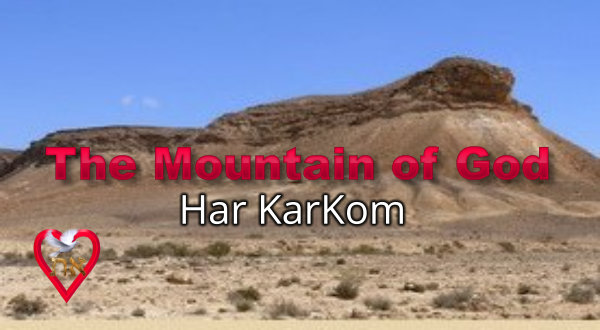



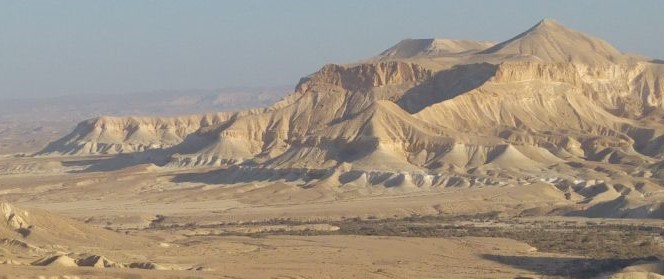
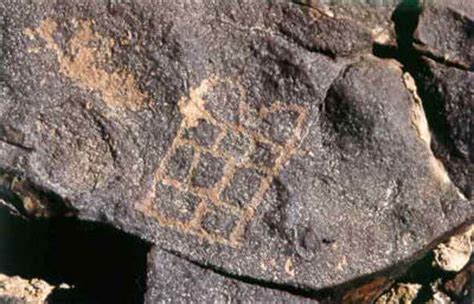
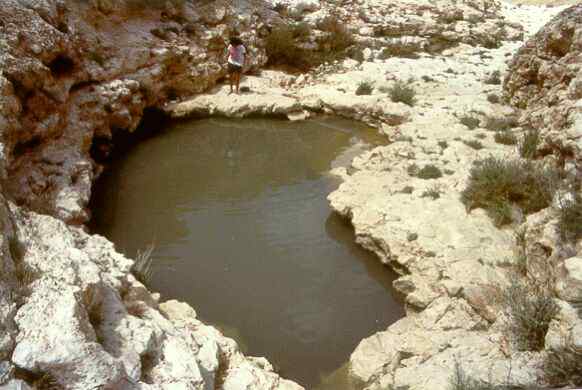
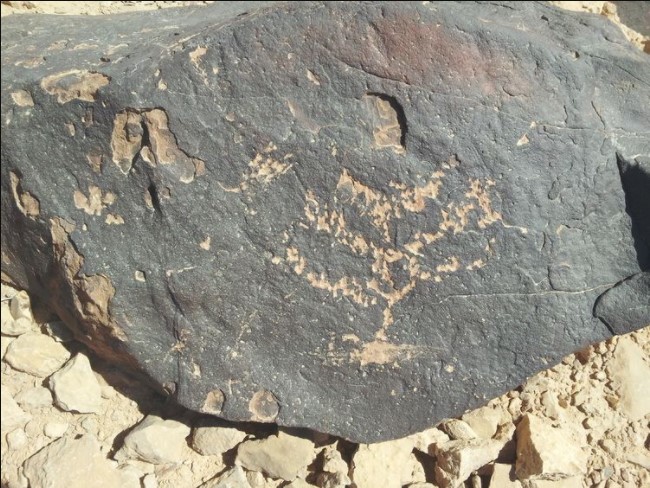










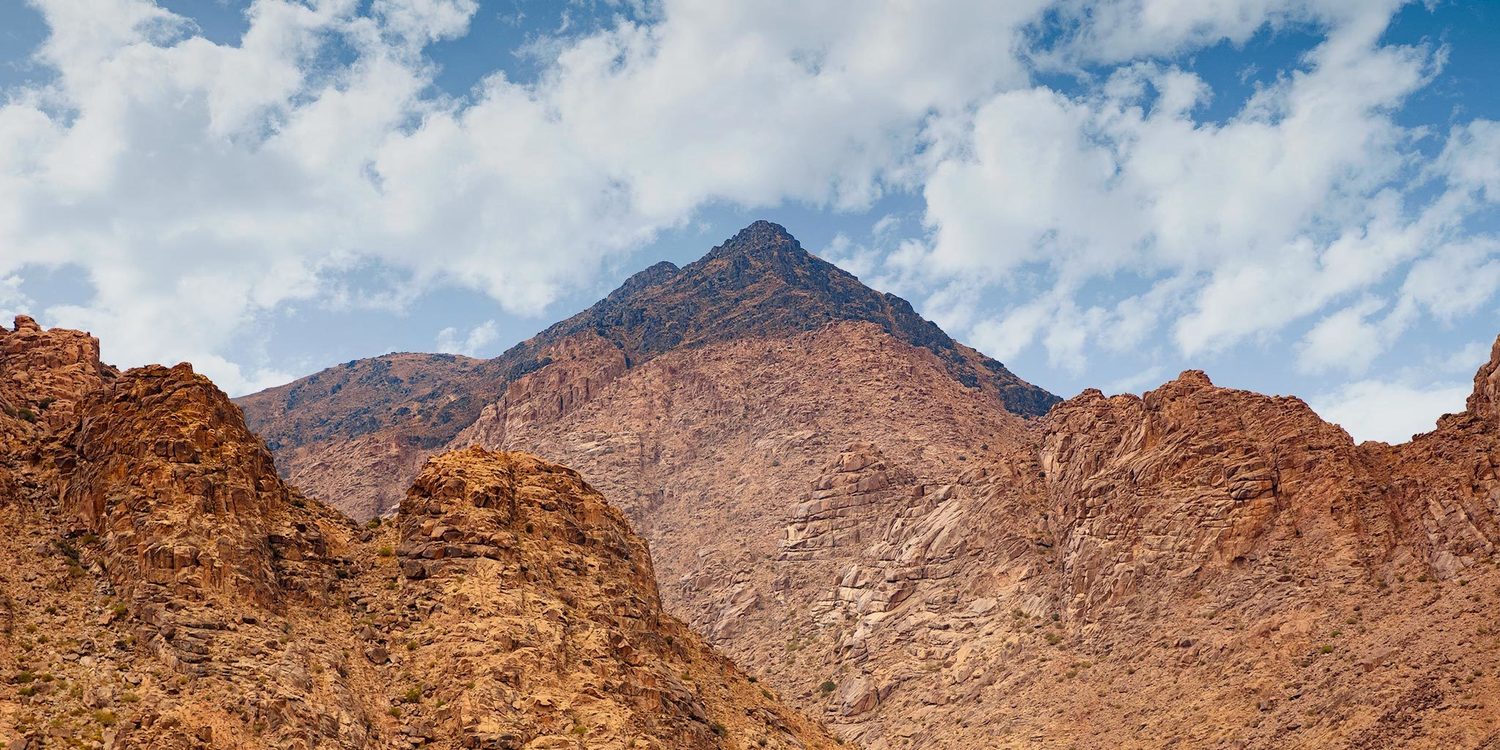
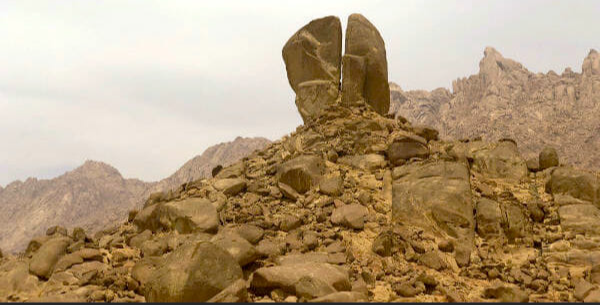
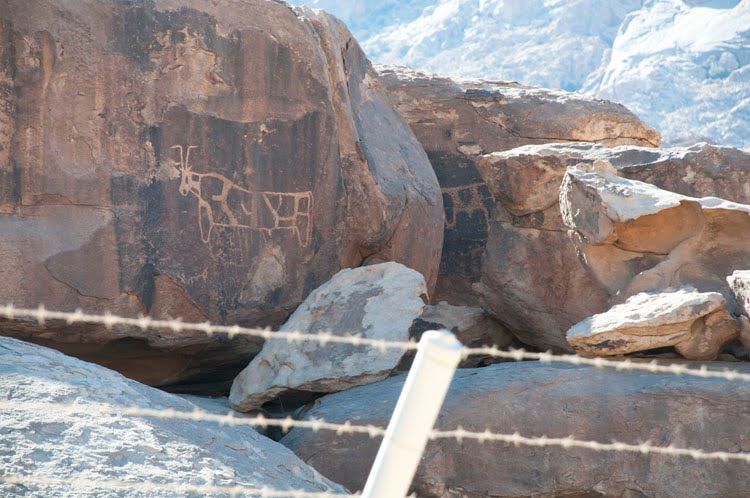

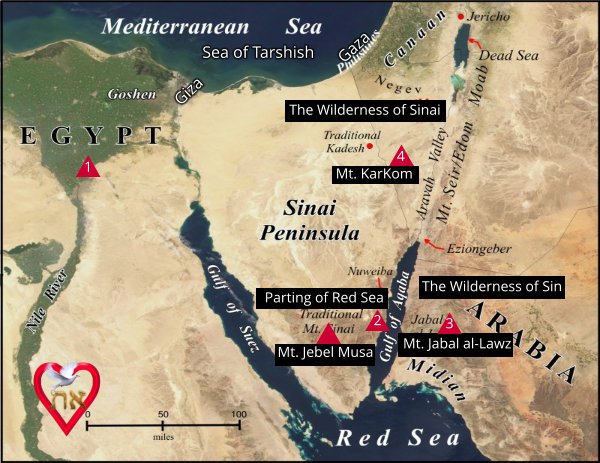
The Mountain of God
By M. Eichhorst
“El Shaddai descended upon
Mount Sinai to the top of the
mountain. El Shaddai summoned
Moshe to the top of the mountain
and Moshe ascended”.
Exodus 19:20
The Negev Desert (Wilderness) range where Har KarKom (Mount
KarKom) is Located.
The possible site of Mount Sinai described in the Torah of the
Tanach Bible.
Where is Mount Sinai? For thousands of years
biblical scholars and archaeologists have said it
is “this mountain” or it is “that mountain”, and
they have even gone as far as dubbing Mt.
Horeb by the Roman Catholic Church also
known as Mt. Jebel Musa in the Sinai Peninsula
as Mount Sinai but none of the discoveries at
Mt. Jebel Musa seem to prove that this
mountain is the real Mt. Sinai until a new
discovery that has surfaced in Israel.
There are 3 references or possible locations of
the Mountain of God
(1) The Mountain of Jebel Musa or Mount Sinai
is in the Sinai Peninsula which has a Roman
Empire Catholic Church at its base but no
evidence that the Israelites were ever there, or
the evidence hidden by the Church.
The Mountain of Jebel Musa & Saint Catherine’s Monastery
Sinai Peninsula, Egypt near the Red Sea
(2) The Mountain of Jabal al-Lawz or the
Mountain of Moshe (Moses) is in Arabia or
Saudi Arabia which has evidence that the
Israelites were there with an etched Menorah,
12 pillar concrete stones for standing or sitting,
a stone split into two believed to be the stone
Moshe struck, dried-up-river, and an etched
Bull. This site is protected by the Saudi Arabian
Government and fenced off, no trespassing. It
also has evidence at the Gulf of Aqaba of the
Red Sea that the possibility that the Egyptian
Chariots artifacts are in the Gulf of the Sea. The
Saudi Arabian Government is blocking non-
citizens from seeing. They can only see pictures
under the sea and therefore cannot verify it.
Mount Jabal al-Lawz, Moses Split Rock, Bull Etched on Rock, &
Sacrificial Calf Alter
North/West Saudi Arabia near the Red Sea
(3) The Mountain of KarKom or the Mountain of
Saffron on the border of Israel which in Moshe’s
day could have been part of the Sinai Peninsula
has evidence of an etched Menorah, 12 pillar
stones different from those at the Mountain of
Moshe, a small lake, etched 10
commandments, and other etchings.
These 3 Mountains have some evidence
however there is only 2 which have inscriptions
evidence that the Israelites were ever there and
only 1 has overwhelmingly inscriptions evidence
that the Israelites were there. That Har KarKom
or the Mountain of Saffron in Israel on the
border with Egypt’s Sinai Peninsula.
The Theory
The Theory that anywhere that El Shaddai is, is
the Mountain of God.
The Israelites could have traveled from Goshen,
Egypt [see map #1] to the Red Sea [see map
#2] to Mount Jabal al-Lawz and surrounding
areas [see map #3] (where Moshe visited in his
exile), Moses struck the rock in Horeb, Arabia,
while in the Wilderness of Sin Israel battled with
Amalek, then they traveled above the Red Sea
near the city of Eilat today and headed to Mount
KarKom [see map #4] which in Moshe’s day
could have been in the Wilderness of Sinai in
Israel today for the 10 commandments at Mt
KarKom which is the Mountain of God.
It appears that at no time was the Israelites at
Mount Jebel Musa. It also appears that Mount
Jabal al-Lawz was one of the places that Moshe
and the Israelites stayed for a long period of
time but not the giving of the commandments. It
appears that Mount KarKome is the exact
location where Moshe and the Israelites stayed
for a long period of time and the giving of the
commandments both times. In Avraham’s day
all three locations were given by El Shaddai
unto Avraham which belongs to Israel.
Har KarKom (Mount KarKom)
Har KarKom or Mount KarKom (Mt. KarKum) or
the Mountain of Saffron is located in Southern
Israel in the Negev Desert near the Egyptian
Border and near the Israeli Defense Forces
(IDF) Test Site and protected by the IDF, may
hold the truth of the real Mount Sinai described
in the Bible. Har meaning “mountain,” Karkom,
derived from the ancient Persian karkum, which
alludes to the saffron-producing crocus flower
and means “yellow.”
According to Jeep Tour in Israel - Mount
Karkum Mount Sinai in the Negev, Rock
Paintings. The journey to Mount Karkum, on the
Egyptian border, is one of the most interesting
and exciting jeep tours in the Negev. Is this the
biblical Mount Sinai as Prof. Anati claims? What
do the tombstones, edible stones, menorah
symbol, tablets, ancient calendars, and tens of
thousands of rock paintings adorn the place
mean? Why did the mountain become a saint
for so many ancient civilizations even before
Mount Sinai? What do the temples of the eye
planted in it mean?
There are several artifacts discovered at the
foot of the mountain which include;
10 blocks which forms the 10 Commandments
Menorah Stone
Small pond or small lake
12 Pillar Stones representing the 12 Tribes
Drawings on Black Rocks which are positioned in a circle
All of these are located at the foot of the
mountain including a drawing of a Menorah on
a black rock. There are several mountains in
this area which have similar drawings near
Mount Karkom which indicate that the Israelites
with Moshe (Moses) were in this area including
other mountains nearby such as Mount Beer
KarKom. Although it is unclear if this is the
mountain of God called by El Shaddai (God
Almighty) as Mount Sinai in the Bible however
there is strong evidence that it is. None of these
appear at Mount Jebel Musa in the Sinai
Peninsula.
Pharoah’s Daughter named the boy in Egyptian
“Monios” which means “that he was drawn from
the water” a reference to the Nile River in
Goshen, Egypt and in Hebrew he is called
“Moshe”, and in English he is called “Moses”.
It appears that none of the cities which are
mentioned in the Bible are cities today, that
Moshe (Moses) led the Children of Israel out of
the land of Goshen (which became Mizraim,
which became Egypt). The Bible says that
Moses traveled for 3 Months and 3 Days to get
to the Mountain of God at Mount Sinai. Bible
Scholars and Archaeologists cannot agree upon
where the cities are located that Moses took to
reach the Mountain of God, however the Bible
does show us some of their names, which no
longer exist.
In the days of Moshe (Moses), the land was given by God to
Avraham (Abraham), including all of the Sinai Peninsula, the
Wilderness of Sinai which includes the Negev Desert, parts of Arabia
(Saudi Arabia) including Midian, all of Jordan, parts of Iran, Iraq
including Baghdad, Turkey, Syria including Damascus, Lebanon,
Gaza, the West Bank, the Golan Heights, Galilee, Canaan, Israel
which all belongs to El Shaddai (God Almighty), Yeshua HaMashiach
(Yeshua the Messiah), and Yisra'el (Israel).
The Parting of the Red Sea (2)
Exodus 14:
15. El Shaddai said to Moshe, “Why do you cry
out to Me? Speak to the Children of Israel and
let them journey forth!
16. and you, lift up your staff and stretch out
your arm over the sea and split it, and the
Children of Israel shall come into the midst of
the sea on dry land.
Exodus 14:26. El Shaddai said to Moshe,
“Stretch out your hand over the sea, and the
water will go back upon Egypt, upon its chariots
and upon it horsemen”.
Moshe struck the Rock in Horeb near Mt. Jabel
al-Lawz (3)
Exodus 17:
5. El Shaddai said to Moshe, “Pass before the
people and take with you some of the elders of
Israel, and in your hand take your staff with
which you struck the river and go.
6. Behold! I shall stand before you by the rock
in Horeb, you shall strike the rock and water will
come forth from it and the people will drink”.
Israel battled with Amalek in the Wilderness of
Sin.
Exodus 17:8. Amalek came and battled Israel in
Rephidim.
Exodus 17:14. Eloah said to Moshe, “Write this
as a remembrance in the Book and recite it in
the ears of Joshua, that I shall surely erase the
memory of Amalek from under the heavens.
Exodus 17:15. Moshe built an altar an called its
name, Eloah (God) is my miracle.
Exodus 17:16. And he said, for the hand is on
the throne of God, Eloah maintains a war
against Amalek from generation to generation.
This refers to a war that took place for many
years and is why there is evidence at Mt. Jabel
al-Lawz that the Israelites were there for many
years. This occurred many years before the
commandments were given and as after the
war then they traveled to Mt. KarKom where the
first and second giving’s of the commandment
were at the Mountain of God (Har KarKom – Mt.
KarKom) in the Wilderness of Sinai which is
Israel today.
Mt. KarKom (4)
The Month of Sivan which is the third month in
the Hebrew Calendar
(which corresponds with May and June).
Exodus 19:1. In the third month from the
Exodus of the Children of Israel from Egypt, on
this day they arrived at the Wilderness of Sinai.
The Third Day of the Third Month of Sivan when
it was morning after 6:00am.
Exodus 19:16. On the third day when it was
morning, there was thunders and lightning and
a heavy cloud on the mountain, and the sound
of the shofar was very powerful and the entire
people that was in the camp shuddered.
It seems more realistic that Moses left
Pharaoh’s Palace of the Israeli Slave Quarters
in Goshen (see map #1) and traveled to parting
of the Red Sea (see map #2) then to Mt. Jabal
al-Lawz (see map #3) which the Bible calls this
the “Wilderness of Sin” and battled with Amalek
for many years, then they traveled to Mt.
KarKom (see map #4) which during that time
was known as the “Wilderness of Sinai” which is
easily seen as many Israeli’s crossing with
animals, ox, carts, etc. Today Mt. KarKom is
located in Southern Israel in the Negev Desert
near the border with Egypt. The Bibles
describes it as the “Wilderness of Sinai”.
Since all of the Sinai Peninsula up to the Suez
Canal and port Fouad was all part of Canaan
(Israel), the word in the Bible described as the
Wilderness or the Wilderness of Sinai in the
book of Exodus was all located in Canaan
(Israel). Sinai was a providence in Canaan
(Israel) just like Gaza, the West Bank, and the
Golan Heights are to Israel today.
__________






















